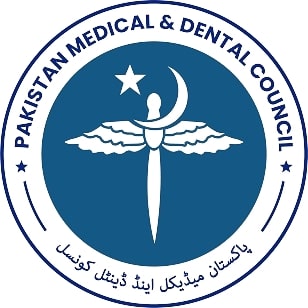MANAGEMENT OF CONGENITAL TALIPES EQUINOVARUS WITH PONSETI TECHNIQUE IN CHILDREN UNDER 2 YEARS OF AGE
DOI:
https://doi.org/10.59058/jaimc.v21i4.212Keywords:
Club foot, Pirani Shafique score, Ponseti technique, CTEVAbstract
Background and Objectives: CTEV is a complex congenital deformity of the foot and occurs due to the confluence of genetic & environmental factors. If it is not treated promptly and accordingly, it limits patient mobility and results in a painful foot. In most cases, it is treated conservatively using the Ponseti technique. This method was developed by a Japanese orthopedic surgeon Ignatio Ponseti who successfully treated CTEV in infants without extensive surgery. It is a manipulative technique with percutaneous release of tendoachilles that allows the ankle to obtain correction. This study was conducted to assess the functional outcomes of CTEV management by Ponseti method.
Methods: Ethical approval was obtained from the Ethical Review Board Of Services Hospital Lahore. This descriptive study was conducted at the department of orthopedic surgery from December 2018 to December 2020. A total number of 120 patients having CTEV deformity of the foot, aged less than 2 years, were included in the study. From these, 70 children had bilateral foot involvement. It was treated with 5-7 casts with each cast applied for 07 days according to the Ponseti method. In the final cast, a percutaneous Achilles Tenotomy was performed, where the deformity was restricted to 10 degrees from the neutral. After completion of casts, each patient was braced with Foot Abduction Brace.
Results: We used Pirani Score for pre- and post-operative assessment of correction of deformity via Ponseti method. There were 91% excellent results achieved through this method, whilst 6% of patients had good results and 3% had poor results.
Conclusion: Ponseti technique has got good functional & cosmetic results. It is economical and easy to apply.
Key words: Club foot, Pirani Shafique score, Ponseti technique, CTEV
Downloads
Published
How to Cite
Issue
Section
License
Copyright (c) 2024 Muhammad Zafar Iqbal, Waqas Ali, Asghar Ali, Aarij Elahi, Muhammad Siddique Hamid, Mubashir Farhan

This work is licensed under a Creative Commons Attribution 4.0 International License.
The articles published in this journal come under creative commons licence Attribution 4.0 International (CC BY 4.0) which allows to copy and redistribute the material in any medium or format Adapt — remix, transform, and build upon the material for any purpose, even commercially under following terms.
-
Attribution — You must give appropriate credit, provide a link to the license, and indicate if changes were made. You may do so in any reasonable manner, but not in any way that suggests the licensor endorses you or your use.
- No additional restrictions — You may not apply legal terms or technological measures that legally restrict others from doing anything the license permits.
The editorial board of the Journal strives hard for the authenticity and accuracy of the material published in the Journal. However, findings and statements are views of the authors and do not necessarily represent views of the Editorial Board. Many software like (Google Maps, Google Earth, Biorender (free version)) restricts the free distribution of materials prepared using these softwares. Therefore, authors are strongly advised to check the license/copyright information of the software used to prepare maps/images. In case of publication of copyright material, the correction will be published in one of the subsequent issues of the Journal, and the authors will bear the printing cost.










